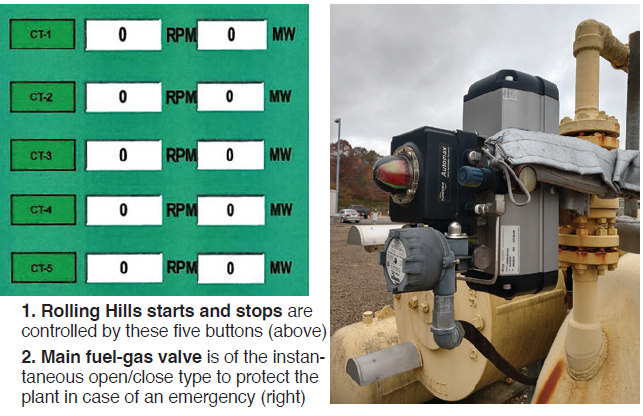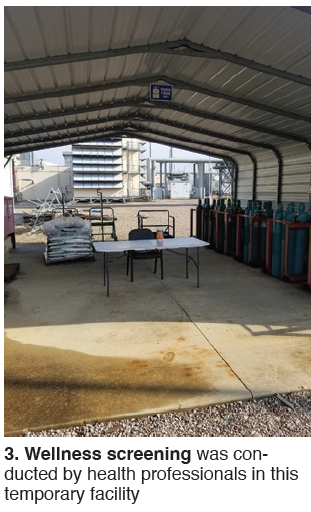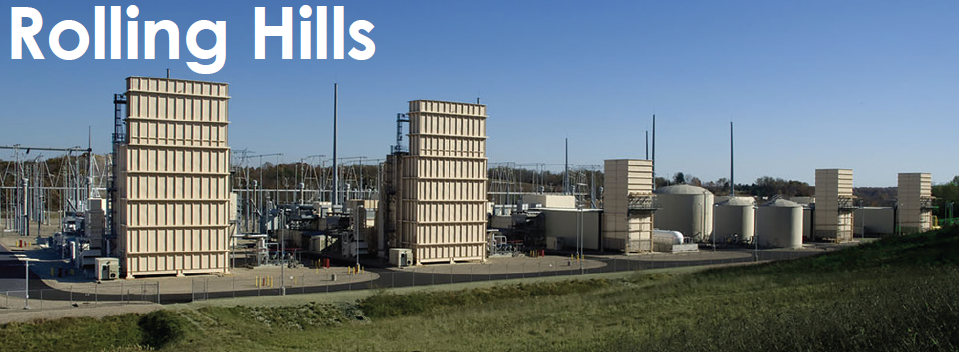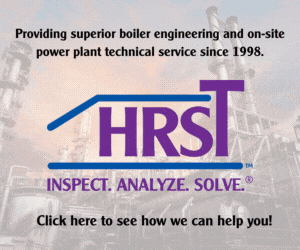Single-permissive remote start, automated fuel equalizing
Challenge. Rolling Hills recently updated its run profile from a 30-min start window to five minutes. Like many other plants with a 5-min window, a remote start program was implemented.
The challenge that Rolling Hills faced was to simplify the old startup sequence so an operator could bring units online successfully while working remotely from a secure device, and then drive to the plant.
Before project implementation, the starting procedure required the operator to open the main fuel-gas valve, start the demineralized-water pump, start the fuel-gas heater, and put the unit on turning gear. The first three already were integrated into the control system, but the turning gear was not. It was controlled by a hand switch located in the electrical package for each unit.
Lastly, Rolling Hills faced the challenge of fuel surging and popping relief valves from opening the main fuel-gas valve without first equalizing the plant pressure. This was done via a hand-operated valve, also opened by the operator before each start.
 Solution. Logic changes were required to implement a simple remote start/stop routine. The plan: Create a single remote-start page that had only five buttons, one for each of the plant’s five gas turbines. With the main fuel-gas valve, fuel-gas heater, and demin-water pump already integrated into the DCS, focus of the plan was to electrically control the turning gear and the fuel-gas equalizing valve.
Solution. Logic changes were required to implement a simple remote start/stop routine. The plan: Create a single remote-start page that had only five buttons, one for each of the plant’s five gas turbines. With the main fuel-gas valve, fuel-gas heater, and demin-water pump already integrated into the DCS, focus of the plan was to electrically control the turning gear and the fuel-gas equalizing valve.
The turning-gear hand switch was located inside each units’ electrical package, where the PLC also was housed. A wire was run from an output card directly to the “auto” side of the hand switch, then mapped to the DCS for programming.
The last piece of the puzzle was how to ensure the pressure differential between the plant side and supply side of the fuel-gas system would not be so great as to impede safe operation. Bear in mind that the main fuel-gas valve is an instantaneous open/close valve to protect the plant in case of an emergency. Opening this valve when there is a high pressure differential would open relief valves throughout the plant, causing a high pressure drop.
Thus, the replacement for the hand valve had to be one that could be controlled by a 4-20-mA signal to regulate the equalization pressure. Plant employees installed the valve (Fig 2), ran the power and control wires, and mapped the valve back to the DCS for programming.
Lastly, the logic was created to automatically equalize Rolling Hills’ fuel-gas pressure, open the main fuel-gas valve, start the fuel-gas heater, reset any trips on the unit, place the turbine on turning gear, and then, after a set time, start the unit. Staff mapped the new logic to pictograms and placed it all on a special, designated remote-start page, reducing the start and stop sequences to a single-button permissive per unit (Fig 1).
Result. All employees were trained on the new start procedure. The simplified process helps prevent operators from missing any steps and has allowed them to start units remotely with ease. Success: Every technician has started units remotely and Rolling Hills has not missed a dispatch within the 5-min window.
Logic was reversed to make the unit stop sequence as easy as the start. By simply sending an “off” permissive using the same single remote-start button, the unit virtually runs the logic backwards and shuts down everything automatically—all while remaining smart enough to know when another unit is running and not to stop the fuel and water system. Plus, also placing itself back on turning gear for unit cooldown.
Project participants:
All Rolling Hills OMTs
Covid-19 initiatives protect plant, contractor personnel
Challenge. The questions Covid-19 presented to Rolling Hills and other plants included the following:
- How do we keep our employees safe?
- How do we keep up ongoing maintenance with reduced staffing?
- How do we keep our contractors and employees working safely during scheduled outages?
 At plants with a relatively small workforce, like Rolling Hills, outage work had to be broken down methodically into step-by-step procedures to analyze the potential contamination of tools, equipment, and staff. Industry standard procedures were rewritten to adapt to the “new normal.” With only a handful of employees at this simple-cycle facility, the need to limit staff exposure to sickness was particularly important. One of the first things that had to be addressed was the need to get contractors into the plant and ready for work while limiting staff exposure.
At plants with a relatively small workforce, like Rolling Hills, outage work had to be broken down methodically into step-by-step procedures to analyze the potential contamination of tools, equipment, and staff. Industry standard procedures were rewritten to adapt to the “new normal.” With only a handful of employees at this simple-cycle facility, the need to limit staff exposure to sickness was particularly important. One of the first things that had to be addressed was the need to get contractors into the plant and ready for work while limiting staff exposure.
Solution. First step was to improve the plant’s safety orientation plan. Contractor orientation and visitor registration procedures were rewritten, paying close attention to detail to limit Covid exposure from outside sources.
Prior to being admitted onsite, contractors were emailed an information packet that included instructions on where to park and report to for a wellness screening conducted by contracted health professionals (Fig 3). Good health verified, contractors were directed to the plant warehouse, which was converted to a breakroom for safety orientation—complete with DVD player, procedures, and required paperwork.
Rolling Hills staff was on hand (at a safe distance) to answer any questions contractor personnel might have had during their self-guided orientation using strategically placed plant radios.
Rolling Hills Generating LLC
Owned by Eastern Generation LLC
Operated by Consolidated Asset Management Services LLC
850-MW, gas-fired, simple-cycle generating facility powered by five 501F engines, located in Wilkesville, Ohio
Plant manager: Corey Lyons






